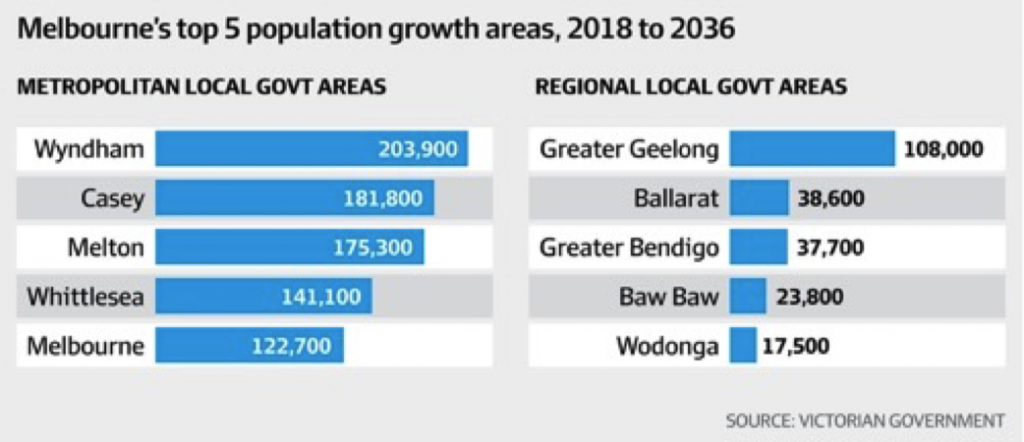Duncan HughesReporter
Jan 2, 2020 – 12.00am
Melbourne is set to overtake Sydney as the nation’s most populous city during the 2020s for the first time since the gold rushes of the mid-19th century, increasing its political power, global status and economic strength over its traditional rival.
Higher growth is being driven by rising birth rates, strong international migration and people moving from interstate and regional hubs, pushing Melbourne’s and Sydney’s populations to about 6 million by mid-2026.
But Melbourne’s population will pass Sydney’s by the end of that year and the gap is expected to continue widening, according to Mark McCrindle, of McCrindle Research.

“The last time it became the nation’s largest city was in the 1860s when ‘Marvellous Melbourne’ was one of the largest and fastest growing in the British Empire and renowned for its booming population and wealth,” said Mr McCrindle.
That was a period when Melbourne grew from a sleepy rural colonial backwater into the nation’s political and cultural capital, renowned for its planning, wide streets, sprawling suburbs and gold-financed wealth.
Melbourne’s population, which is expected to become home for 75 per cent of Victorians, is estimated to grow 28 per cent faster than Sydney over the next six years, according to the latest estimates.
Mr McCrindle said increasing population will also boost its national political power, global position and reach as a centre for corporates and major cultural and sporting events.
“It is not luck that Melbourne was voted the most liveable city for seven years in the past decade,” said Mr McCrindle.
“The biggest population creates a gravitational pull that will begin to attract more global organisations, big events and the head offices of national and regional institutions. New institutions will also be drawn by being located in the nation’s largest city.”
Sydney’s population growth began to peg back Melbourne’s from the 1860s until regaining its title as the nation’s biggest city early in the 20th century.
Sydney will remain the nation’s corporate gateway, according to the state government.
Since then Sydney has grabbed the headquarters of the Reserve Bank of Australia, Australian Securities and Investments Commission, Australian Prudential Regulation Authority and Australian Stock Exchange.
Melbourne was home to the federal parliament from 1901 until it moved to Canberra in 1927.
Some of the world’s most expensive real estate, congestion, high cost of living, and technology allowing employees to work away from the head office is driving families to other cities, principally Brisbane and Melbourne.
Median property prices in Sydney and Melbourne are $776,000 and $619,000 respectively, according to CoreLogic, which monitors property prices.
But Melbourne’s property prices are also rising sharply, infrastructure is under pressure, particularly in the western suburbs, and gang violence is rising.
Richard Wynne, Victorian minister for planning, said: “We’re getting on with the projects that should have been built decades ago.”
The government is spending about $14 billion annually over the next four years on infrastructure, about triple what was spent in the 10 years to 2014.
Melbourne’s claims to be the nation’s biggest is likely to trigger debates about where each city draws its boundaries.
Rob Stokes, Minister for Planning and Public Spaces, said: “Sydney is Australia’s economic gateway to the world, and we encourage big investment in big projects.”
Mr Stokes said it is spending more than $97 billion over the next four years on infrastructure ranging from roads and infrastructure to schools and hospitals.

